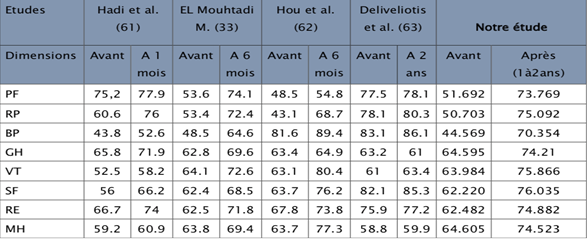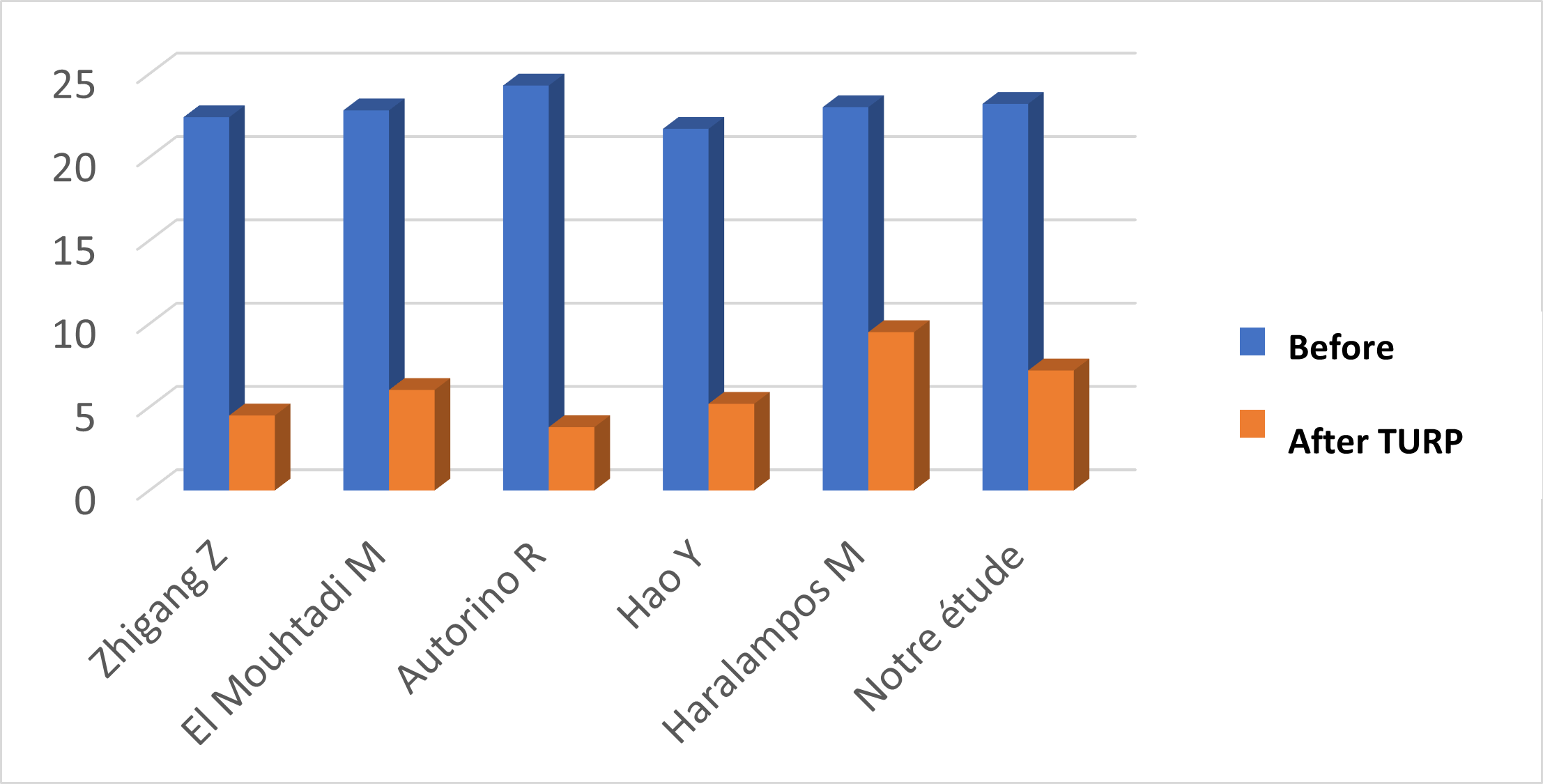Quality of Life Assessment After Trans-Urethral Prostate Resection (about 195 cases)
Ouaddane Alami R*, Chama O, Ahsaini M, Mellas S, El Ammari J, Tazi MF, El Fassi MJ and Farih MH
Department of urology, Hassan II University Hospital, University Sidi Mohammed Ben Abdellah, Morocco
Received Date: 10/03/2023; Published Date: 26/05/2023
*Corresponding author: Rhyan Ouaddane Alami, Medicine doctor, Department of urology, Hassan II University Hospital, University Sidi Mohammed Ben Abdellah, Fez, Morocco
Abstract
Objectives: To evaluate the quality of life of patients after transurethral resection of the prostate and to determine the main prognostic factors.
Patients and Methods: Retrospective study over a period of 4 years, from January 2016 to January 2020, on 195 patients who underwent TURP for prostatic hypertrophy; collected in the urology department of the CHU HASSAN II.
Results: All dimensions of the SF-36 improved significantly after surgery. The majority of the UCLA/RAND PTI domains also improved after resection, except for the domains "sexual function" and "sexual discomfort", which showed a significant deterioration after surgery. Concerning the IPSS, the score improved significantly after resection. This corresponds to an overall improvement of the different parameters in our patients.
Keywords: TURP, Quality of life, Urinary symptoms, Prostate
Introduction
The prostate has a close relationship with the neurovascular and sphincter systems, making its resection not free of complications, affecting urinary and sexual function. Assessment of QOL has become a standard practice in the management of pathologies requiring surgical treatment. The quality of life of a patient is a complex, multidimensional and subjective concept whose perception is best expressed by the patient himself [1].
Patients and Methods
Retrospective study over a period of 4 years, from January 2016 to January 2020, on 195 patients who had undergone TURP for prostatic hypertrophy; collected in the urology department of the CHU HASSAN II.
We used an exploitation form and three validated questionnaires: the questionnaire " Short Form-36 " (SF-36), the questionnaire " UCLA/RAND Prostate-targeted Index " (UCLA/RAND PTI) and the questionnaire " The International Prostate Symptom Score " (IPSS).
Results
The mean age was 69.02 years (52 to 90 years). In our series, the estimated prostate volume ranged from 30 to 80 g with a mean of 47.70 g.
All dimensions of the SF-36 improved significantly after surgery. The UCLA/RAND PTI domains of "urinary function" and "urinary discomfort" improved significantly after resection. We found the same result for the domains "digestive status" and "digestive discomfort". As for the domains "sexual function" and "sexual discomfort", we observed a significant deterioration after the operation. On the other hand, an improvement in sexual function and libido was noted in 15 patients after the operation. Concerning the IPSS, the score improved significantly after the resection.
Regarding the question on quality of life related to urinary symptoms, we found a significant improvement after the operation.
Our results are in line with the data of the literature consulted.
Table 1: Comparison of our mean SF-36 score results before and after TURP with the literature.


Figure 1: Evolution of the average IPSS score in our series and the literature.
Table 2: Mean score and evaluation of the UCLA/RAND PTI urinary function and urinary discomfort items from our series and literature.

Discussion
Trans-urethral monopolar resection of the prostate is considered the gold standard of treatment of benign prostatic hypertrophy. According to the results of different validated questionnaires, reported in several series of studies including our own, this surgical technique has improved the quality of life of patients, particularly in terms of urination and general health [2].
However, its impact on sexual function is not negligible. As described, and comparable with the data in the literature, the most frequent complication was retrograde ejaculation, which makes it necessary to explain the consequences on sexuality to the patients and their partners preoperatively and to propose a psychological follow-up postoperatively [3].
Several factors determining the quality of life are closely linked, in particular, the advanced age of the patients, the history, the symptoms and the duration of the evolution of the disease.
Conclusion
Trans-urethral resection considerably improves the urinary function of patients as well as their general quality of life. In addition, although this surgical technique has an impact on sexuality, it also seems in some cases to improve the sexual life of the patients.
In order to better analyze the quality-of-life data, especially those related to sexuality, an adaptation of the questionnaires to each company is proposed.
Conflict of interest: None
References
- Lacoin R-O. Fourcade M, Rouprêt A, Slama C, Le Fur d, Michel E. Perceptions de l’hypertrophie bénigne de la prostate par le patient et le médecin généraliste étude Trophée. Prog Urol, 2013; 23: 50-57.
- El Mouhtadi M. Devenir des patients à long terme après résection trans-uréthrale de la prostate.Thèse de médecine n° 136; Université Cadi Ayyad, Faculté de médecine et de pharmacie; Marrakech, 2018.
- Reich O, Gratzke C, Bachmann A, et al. Urology section of the Bavarian Working Group for Quality Assurance. Morbidity, mortality and early outcome of transurethral resection of the prostate: a prospective multicenter evaluation of 10 654 patients. J. Urol, 2008; 180: 246–249.

